The legends of Venice hidden between history, water and art
Behind the beloved city of Venice, ancient mysteries and curious legends are hidden which over time have become part of its history: love stories, terrifying tales, suspicious otherworldly presences, unusual apparitions but also strange disappearances are just a few tales belonging to the secret part of Venice that, perhaps, not everyone knows.
Truth or legend?
The price to pay for the construction of the Rialto Bridge
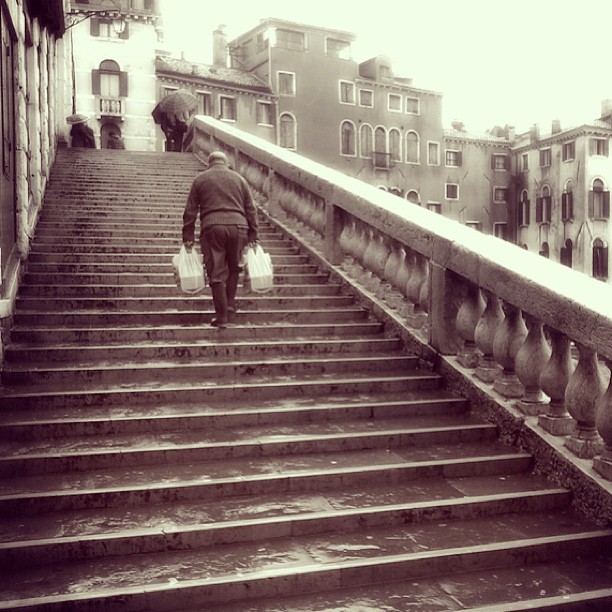
At the time of the construction of what today can be defined as the most famous bridge in the Venetian city, the men who worked on it were desperate: the bridge designed by Antonio da Ponte was an excessively complex engineering work, presenting itself in a single span that seemed very difficult to stand upright. Small collapses often prevented the regular continuation of the work. Then there were the difficulties linked to the funds that were beginning to be scarce as the cost gradually became higher. Since the collapses always happened at night, Antonio he decided to hide near the construction site to find out the cause, as he suspected that there was a curse on the construction area. As the bridge collapsed, he heard a chilling laugh coming from behind him: turning around, he saw a tall man covered by a long black cloak who said that no human being would be able to build a bridge over the Grand Canal unless he was willing to pay a very high price. Antonion, eager to finish the work, replied that he would give his soul, but the mysterious man said that he would want the soul of the first person to cross the bridgeonce it's done. The architect accepted, he needed to finish the work commissioned by the Serenissima to be able to support his wife and the firstborn on the way. As agreed, the bridge no longer collapsed and not forgetting the promise made, he had his workers bring a rooster with the intention of freeing him on the bridge to allow him to cross it first, as the devil asked. The devil had no intention of being tricked by a human being, so he turned into a labourer and ran to Antonio's house, with the intention of warning his wife of an accident that had occurred to her husband on the bridge. The woman ran to the site and after crossing the bridge she fell to the ground losing one's life. The devil not only took the soul of the first person who crossed the bridge, but also punished Antonio by taking the soul of his son in his womb. From that day on, the soul of the unbaptized child wandered on the bridge and whoever passed over or under a gondola heard crying and sneezing. Everyone was afraid knowing the story and they hurried to finish the journey, until a gondolier answered “bless you” to the sneeze of the newborn baby who, after thanking him, could leave that place, as if he needed a gesture of attention and compassion, which he had never received since he had never been born.
But it seems that the souls of the young woman and her son still roam the deck on cold winter nights...
The “sguazeto alla Biasio” with an horror flavor
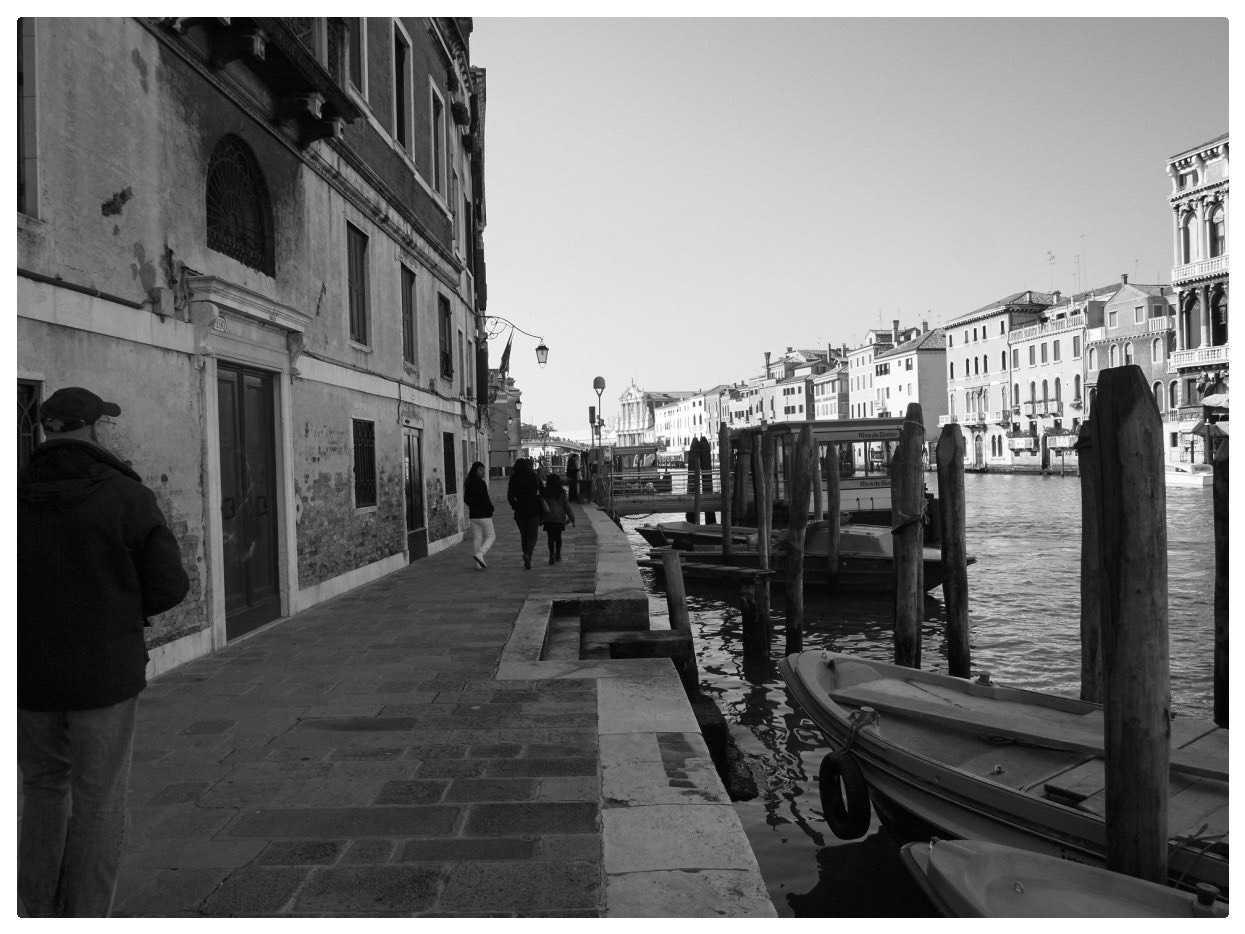
On the right side of the Grand Canal, near the Biasio shore, Biagio Cargnio nicknamed “Biasio”, a renowned cook, once worked in an inn where he served the “sguazzeto ala bechera”, that is a plate of mixed meats seasoned with onions and tomato sauce. The dish was loved by the Venetians and during the lunch and dinner times this little place was always popular. Usually the Venetian style stew was prepared, and is still prepared today, with pork. But Biasio defined himself as an artist, wanted to keep secret the recipe with which he delighted the palates of the many Venetians who crowded his workshop. While his fame increased and his goodness conquered even the noblest, strange disappearances of children occurred in the city: despite the searches of the gendarmes, the children no longer found their way home. One day, an honest hungry boatman, went to Biagio to taste his beloved dish, and inside it he found something that he should not have found. Initially he thought it was a bone, and he sighed with relief for not breaking a tooth, but when he pulled the suspicious bite out of his mouth, he noticed that it was not a bone but a finger presumably of a child. Frightened and disgusted, he left the restaurant, and during the following hours he advised the authorities that the same evening they searched the kitchens and the back room, finding the remains of numerous children used to make his dish unique. After being arrested, Biasio confessed the truth to the judge: the tender meat of the children, left to macerate for hours in wine and various spices, managed to guarantee a delicious taste and a greater profit. It was never specified how many children he killed or how he got them. After the trial, Biasio was sentenced to death: he was tied to a horse and dragged from prison to his shop, where his hands were cut off. From here he was then taken to Piazza San Marco and beheaded between the two columns of the shore. His body was cut into quarters, and each quarter was exhibited in four different places in the city. The Serenissima judges wanted him to prove what he himself had inflicted on his little victims.
The gentle spirit of Palazzo Grassi
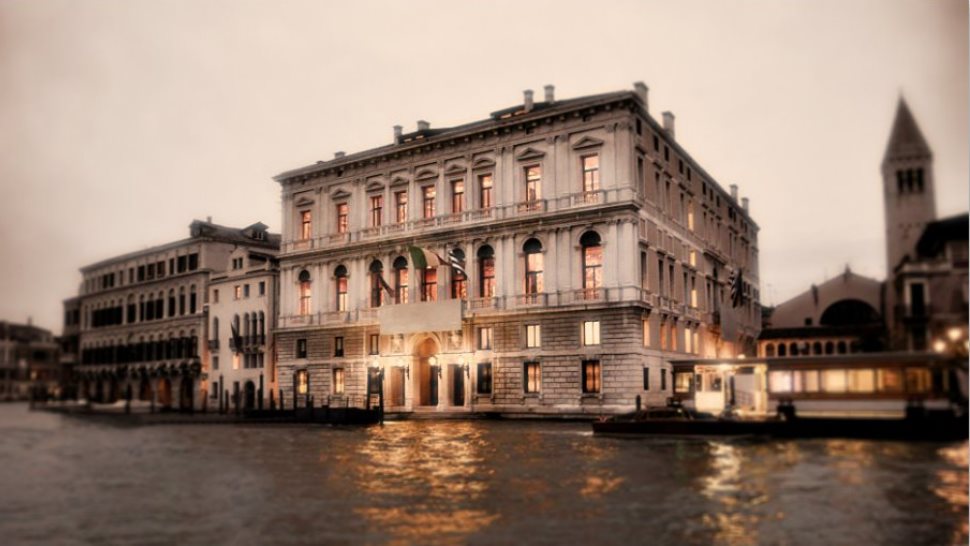
Palazzo Grassi, also known as Palazzo Grassi-Stucky, is one of the most famous buildings in Venice and, from the district of San Marco, overlooks the Grand Canal. Behind its size and aesthetic beauty, the noble palace built last after the fall of the Republic of Venice hides a mysterious legend: it seems to be the home of a young girl who died in mysterious circumstances falling from the balustrade of one of the balconies of the inner court after suffering violence. The circumstances of her death are uncertain, as it was never known whether it was a suicide or murder. The spirit of this young woman, according to some witnesses, is not bothersome, but with a gentle tone of voice whispers her name in the ear of the individual. Among the testimonies, there is also that of a former employee of the Palace, who was in charge of night security: during the usual reconnaissance tour he suddenly heard screams to stop and, after doing so, pointed the light in front of him and breathed a sigh of relief. The night watchman used to wander the corridors and rooms in total darkness, to blend into the darkness and, above all, for his precise knowledge of the Palace; if it had not been for the spectre of the young girl, he would have fallen into a chasm opened by the workers for the renovation work.
The ghost of the Gardens of Castello swore eternal allegiance

The origin of this legend, compared to the others, is quite recent. It concerns the statue of Giuseppe Garibaldi, located in the Avenue of the same name in the Castello district, positioned at the entrance to the Biennale Gardens at the Church of San Francesco di Paola. Behind him, placed at the base of the hill on which he stands, there is another figure: a man named Giuseppe Zolli, who had sworn to be ready to watch Garibaldi's back even after his death. In 1921, a Venetian gentleman named Vinicio Salvi, as usual, went to the nearby Gardens to collect snails, but that day he received a violent push near the statue that made him fall to the ground: the only thing he noticed was a red shadow that moved away. Initially his testimony was not taken seriously, but similar episodes occurred again, even to policemen who were on patrol after numerous reports. An aged resident, who also noticed the mysterious red shadow, was able to distinguish the features of Giuseppe Zolli, who had died shortly before, who took part in the expedition of the Thousand and swore loyalty and protection to his leader. So it was that the inhabitants of the neighbourhood decided to erect a statue in his honour, placing it behind Garibaldi, so that he could always watch over him as he had promised: from that moment the ghost never showed up again.
The beggar who carved the story of the levantine
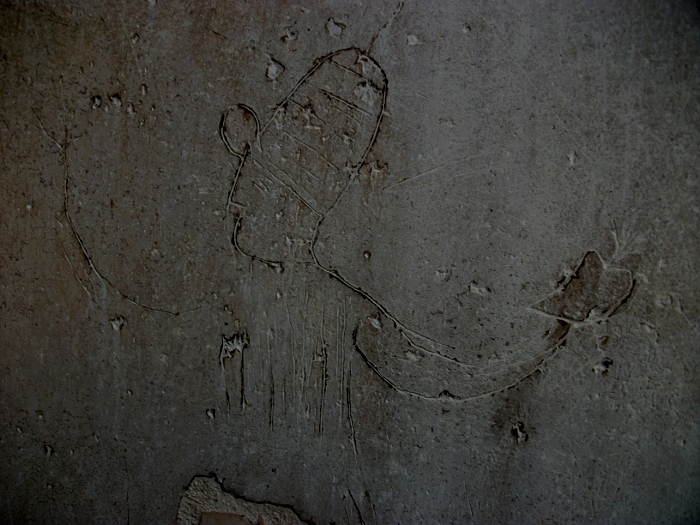
Cesco Pizzigani was one of the most skilled Venetian stonemasons of the time. With his hands he created some of the most fascinating and precious perspective games of the facade of the Scuola di San Marco, located in the Castello district, which made it famous throughout Europe. A few years later, at the beginning of the 1500s, the artist's wife fell ill and Cesco did everything he could to heal her, he even sold his workshop, but his wife died leaving her husband in misery. With nothing left in her pocket, she found herself begging on the portal of the School that he himself had helped to build. Sometimes Cesco with an old nail he practiced his old art at the sides of the doorway, carving the silhouettes of the ships that were landing not far away. According to legend his life crossed paths with a levantine, tormented by the inner conflict of being half Venetian and half Levantine and therefore not always accepted by both communities. He vented his frustration by beating his mother who endured his son's outbursts, loving him equally more than his own person. One evening, however, the Levantine was overwhelmed by anger and stabbed his own mother literally ripping her heart from her chest. Terrified by the gesture, the young man fled and continued to hold his heart in his hands. On the first step of the bridge in front of San Marco School he stumbled, fell and lost his mother's heart. He heard a voice come out saying: “My son, are you hurt?”. By now psychologically unstable, the young man committed suicide by throwing himself into the waves in front of the nearby cemetery: it is said that it is still possible to hear his cries in the field, while he searches his mother's heart to feel the warmth of his love during the cold winter nights. Cesco, who saw the scene, decided to make it indelible: on the portal, among the profiles of the ships, you can see a figure with a turban on his head and holding a human heart in his hand.
The stone statues of Campo do Moors

The Campo do Moors, located in the district of Cannaregio and a stone's throw from Tintoretto's House, is the scene of a curious and singular legend, concerning four stone statues set in the wall of Palazzo Mastelli del Cammello (so called because of a camel on its facade): the latter and other buildings overlooking the Campo were built by the Mastelli family, arrived in Venice in 1113 by the Morea (corresponding to the Peloponnese), and therefore called “Moors”. The family consisted of three brothers: Rioba, Sandi and Alfani, who traded thirst and spices. They were always ready to cheat their customers by selling poor quality goods at very high prices. Among the business practised by the brothers was also the management of a bank, through which a very religious Venetian lady was swindled who begged Saint Mary Magdalene to cast her curse on the three merchants. “May the Lord turn us to stone if this is not the best cloth in Venice” said the brothers to Santa Maria who presented herself to them as a customer. He took them at their word: after this last statement, in fact, the three merchants immediately turned to stone, together with the servant whose name nobody knew. During the nineteenth century the statue of Sior Rioba, the most famous of the four due also to the birth in 1848 of a satirical newspaper called "L'ombra de Sior Antonio Rioba", lost its nose which was remade with an improvised piece of iron. A second legend was born from here: whoever had rubbed his nose would have been lucky.
Try to believe it!
The devil of the House of the Angel
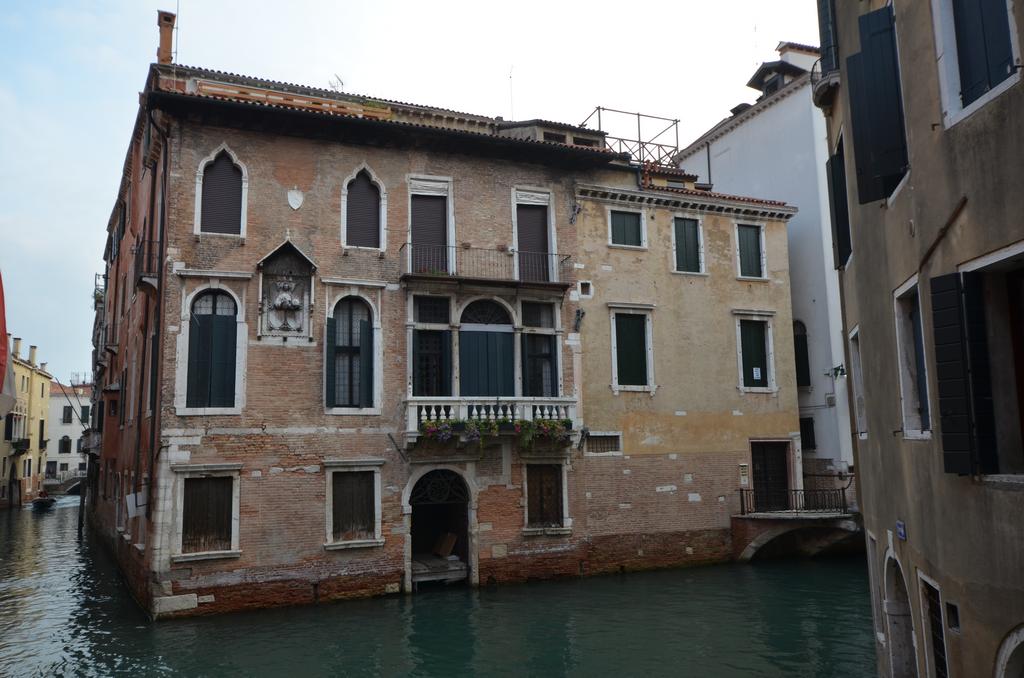
Behind St. Mark's Square and overlooking a small canal is a house linked to a rather curious legend. The house takes the name of Ca' Soranzo, even if it is commonly identified as “Casa dell'Angelo”, because it has a statue of an angel on the facade with a small hole above the head. Around the middle of the 14th century, Iseppo Pasini, a lawyer of the Doge's Curia, lived there and made a profit by making money off the shoulders of the poor people. He had a trained monkey in his house who took care of the household chores and of which he was very proud: he was completely unaware that the monkey was the devil himself, who wanted to take possession of his soul. It was friar Matteo da Bascio who discovered the monkey's double identity, who, going to Ca' Soranzo for a lunch, noticed that the monkey ran away, hiding under the bed. The monk became suspicious and ordered the monkey to leave the house. The monkey spoke and said that he could not because he had been ordered to take the soul of the dishonest owner who was very devoted to the Virgin Mary: every evening Iseppo Pasini dedicated a prayer to the saint, and the monkey would take his soul when he forgot to do so, but it never happened. The monk, however, found a compromise: he ordered the monkey to leave the house immediately by making a hole in the wall, a hole that would serve as an eternal testimony of what had happened. When he returned to the table he scolded Pasini for his misdeeds, making everything more theatrical by squeezing a strip of the tablecloth from which blood came out, that of all the people who were victims of the lawyer's tricks. He burst into tears, repenting. However, there remained a hole in the wall of the house, through which the devil could enter at any moment. Father Matteo suggested to Pasini to defend him with the image of an angel so that the devil would stay away from Ca' Soranzo.
The witch who wanted to steal Tintoretto's daughter's soul
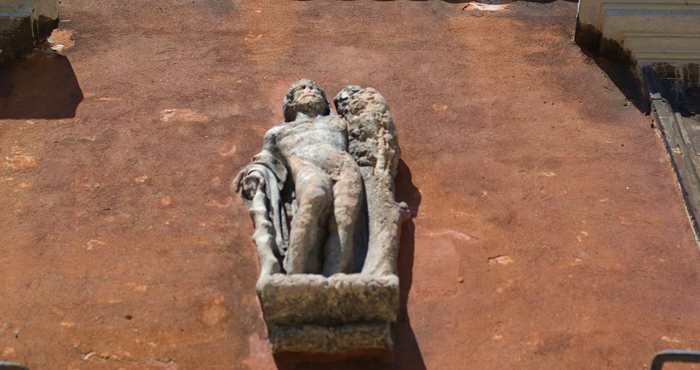
At number 3399 of the Cannaregio district, in Fondamenta dei Mori, you will find the house of the painter Jacopo Robusti, called Tintoretto. Built during the fifteenth century in Gothic style, the building is tall and narrow with a characteristic three-mullioned window on the first floor that joins two other elements that distinguish the facade of the house: a plaque that recalls the house of the great Venetian painter, and a small marble statue, representing Hercules with a club. This statue was built after an event that happened to Marietta, the painter's eldest daughter, who was close to her first communion. At that time there was the custom of receiving the Eucharist every morning for ten days in the chapel of the convent of Madonna dell'Orto and on the first day, Marietta met an old lady who told her that if she wanted to become “like the Madonna”, she should keep the hosts in a safe place instead of swallowing them and that she would receive a surprise on the tenth day. Marietta kept the wafers in the garden of her home, storing them in a box behind the animal trough. One day, having no way to take the box because of the laziness of the animals that were not moving, she confessed her encounter to her father, who knew this magical and malicious practice by which witches stole souls. He then took the wafers to the church and asked Marietta to wait for the old woman at the window to invite her into the house. On the tenth day the witch was not late and as soon as she entered the house she was clubbed by Tintoretto: after the first blows she turned into a cat in order to escape but given the impossibility, she threw an inhuman cry and, wrapped in a black cloud, she hurled herself violently on the wall in order to escape, leaving a hole in the wall. Tintoretto, to avoid her return and also to remind her of what had happened to her, had the hole walled up with a statue of Hercules guarding the house walls.
The Red Stone into which evil has sunk
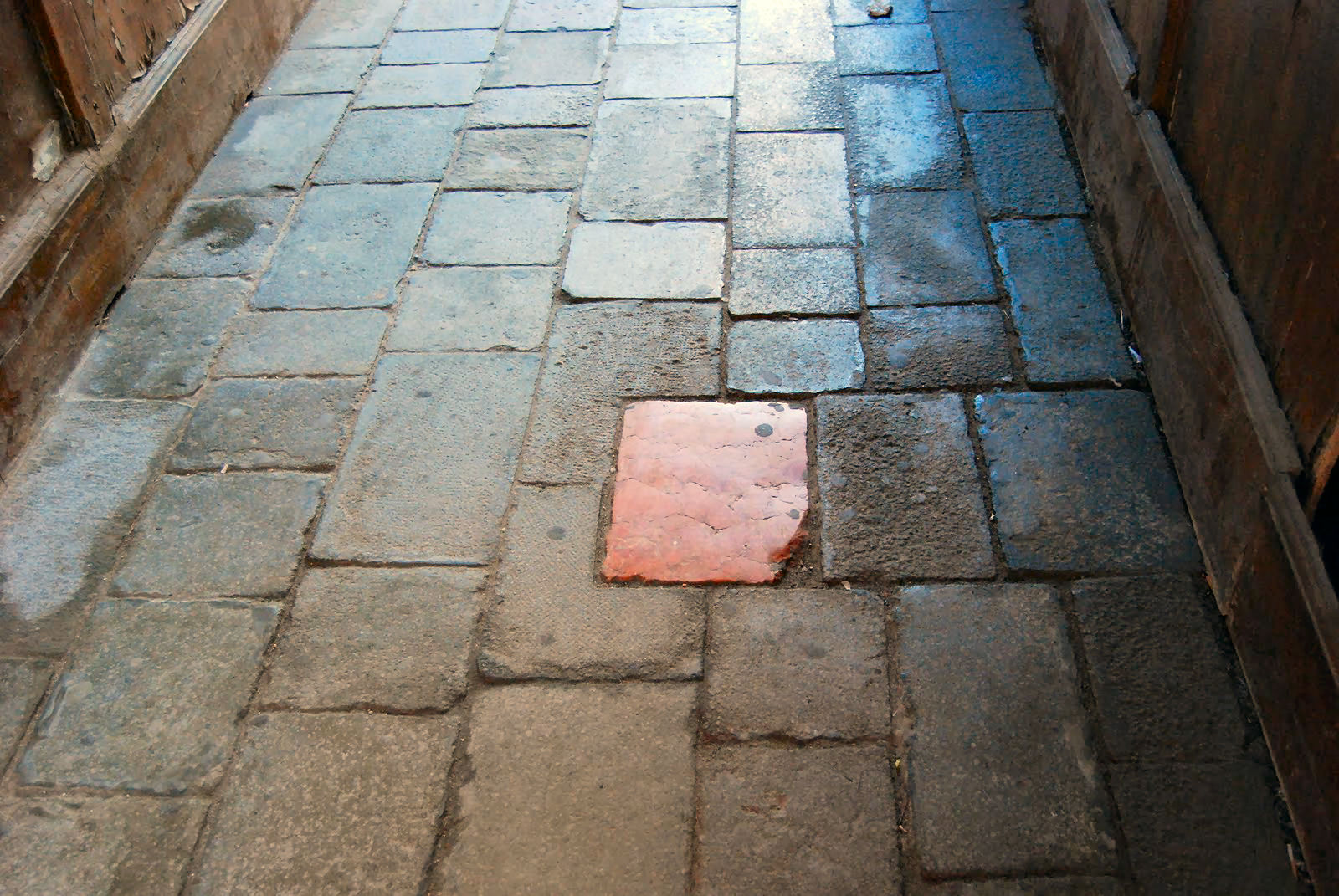
Between Corte Nova and Calle Zorzi, you will find the Sotoportego della Corte Nova under which there is an unusual red stone. In 1630 a woman named Giovanna, who lived in the Sestiere di Castello, had a vision of the Madonna who recommended her, in order to overcome the plague that was rapidly spreading at that time, to paint a painting representing her image together with Saints Rocco, Sebastian and Justina, and finally to exhibit it on the wall of the Sotoportego della Corte Nova: the district remained unscathed by the terrible disease, which suddenly disappeared, just as the almost miraculous painting disappeared. But on the ground, among the usual stones, you will find one of red, inside which it is said that the plague (understood as a malignant figure) has sunk as ordered by Our Lady. Since then the Venetians walking in the Sottoportego have been careful not to step on this red stone, which is considered a bearer of bad luck and misfortune. Some assure, instead, that stepping on it brings money and love.
The ghost of a mermaid who loved even after death
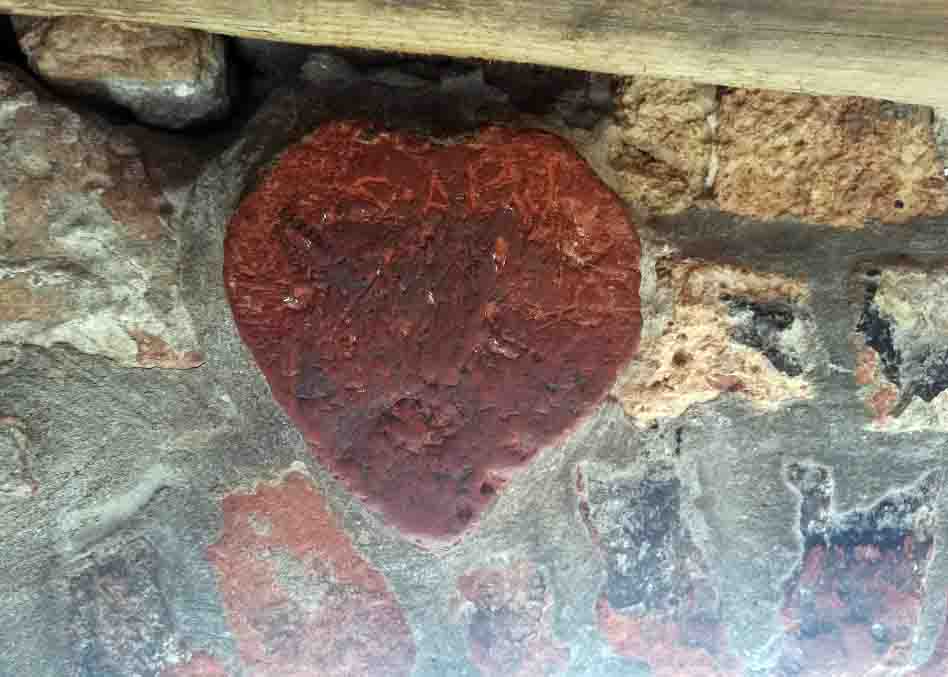
The legend takes place in the Sotoportego dei Preti in the Castello district, which houses a small red brick heart. The underpass is quite a popular place because the couples who touch the heart together hope that the local legend is true and that their love will remain eternal. Legend has it that a fisherman, named Orio, rescued a beautiful mermaid called Melusina. From their meeting a deep love story was born: Orio asked the mermaid Melusina to marry him and she agreed with the promise, however, not to meet her on Saturday in the days before the wedding. Orio didn't respect the request: on the third Saturday curiosity got the better of him and at the usual meeting place, the fisherman didn't find the mermaid, but an enormous sea snake that turned out to be Melusina herself, struck by a curse. The curse turned her into a monster every Saturday and the only way to end the spell was marriage. Orio decided to marry her anyway: the mermaid Melusina turned into a woman and gave birth to three children, but despite years of joy, the woman died because of an incurable disease. Left alone, Orio continued to work to support his family: on his return from the sea, however, he noticed that the house was always in order. Suspicious, he decided one day to come back earlier to thank whoever was helping him in secret; but waiting for him he didn't find a person, but a snake. Scared and worried for his own safety and that of his children, Orio instinctively killed the animal. Only in the following days, finding the house messy on his return, he realized he had killed nothing but Melusina. The red brick heart placed in the underpass wants to remember and celebrate this tragic but authentic love story.










Lascia un commento